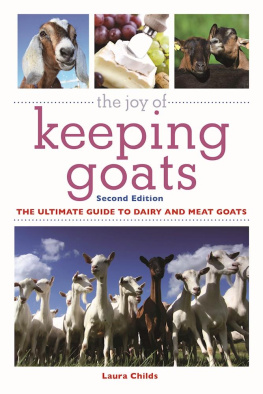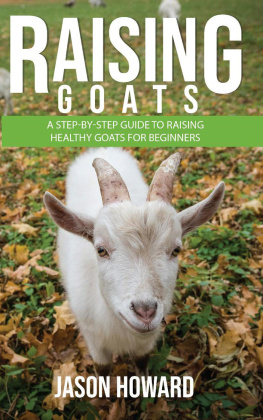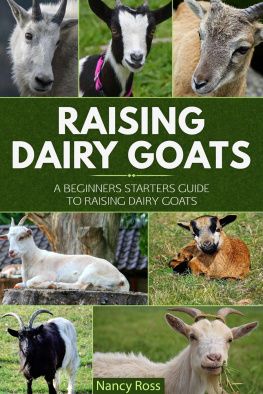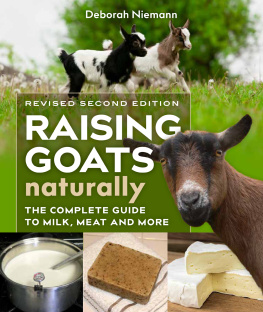Page List
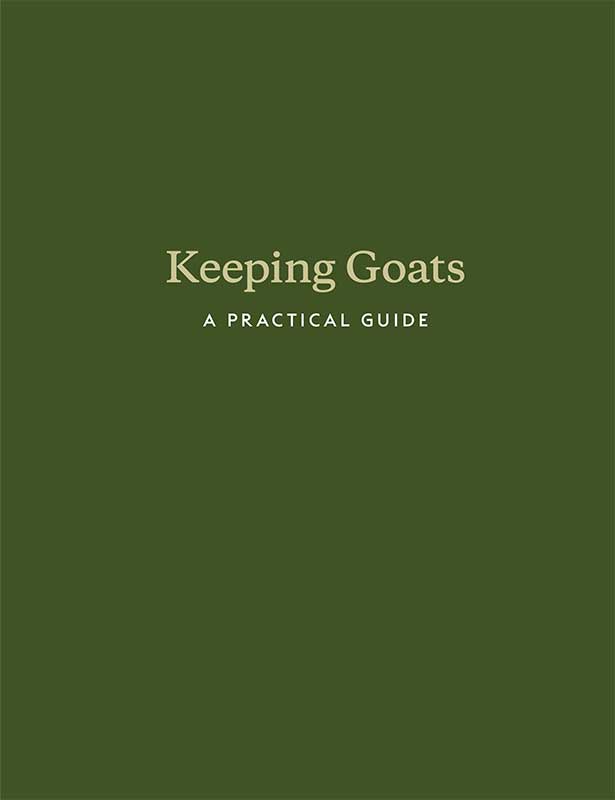
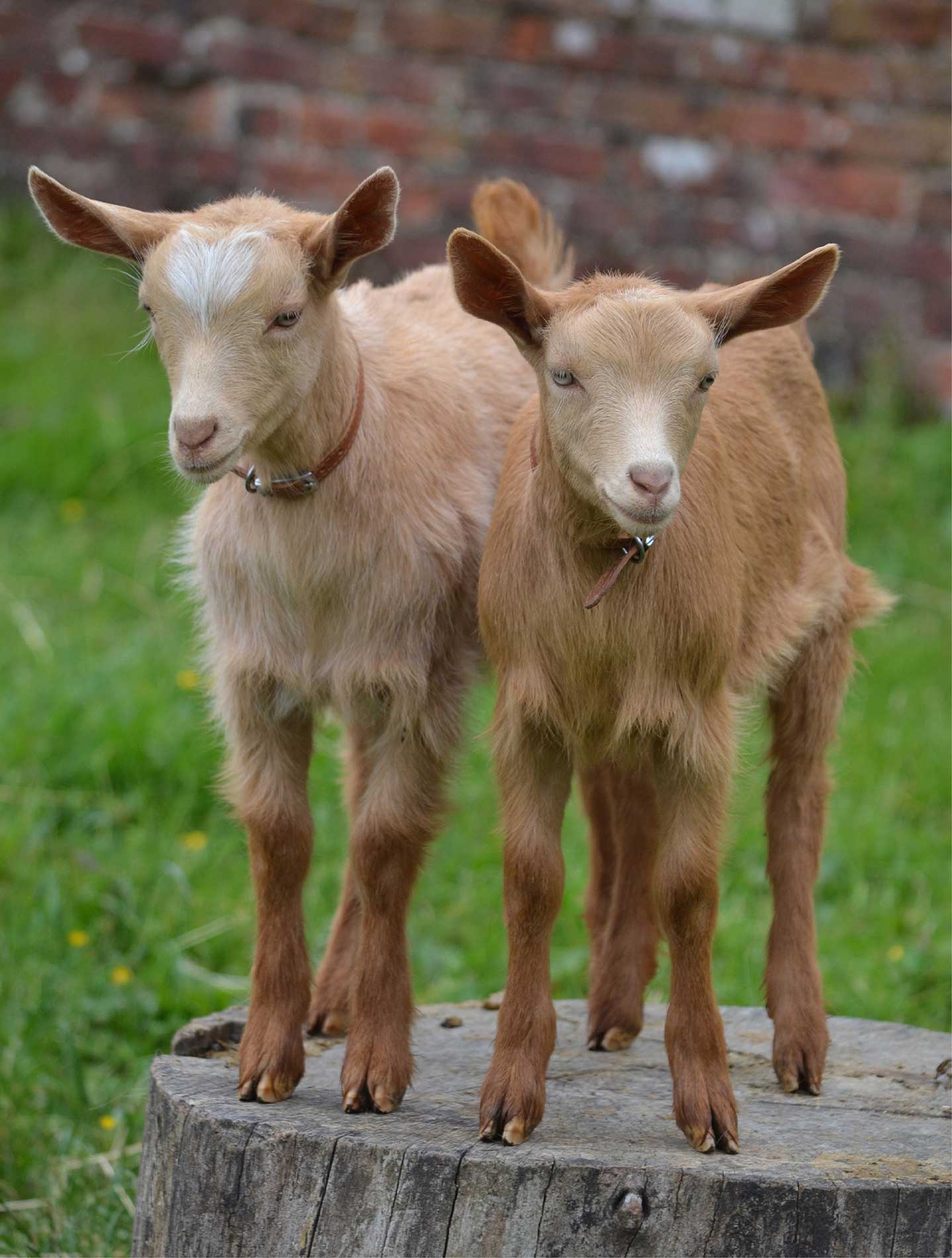
Debbie Kingsley
Keeping Goats
A PRACTICAL GUIDE

First published in 2022 by
The Crowood Press Ltd
Ramsbury, Marlborough
Wiltshire SN8 2HR
www.crowood.com
This e-book first published in 2022
Debbie Kingsley 2022
All rights reserved. This e-book is copyright material and must not be copied, reproduced, transferred, distributed, leased, licensed or publicly performed or used in any way except as specifically permitted in writing by the publishers, as allowed under the terms and conditions under which it was purchased or as strictly permitted by applicable copyright law. Any unauthorised distribution or use of this text may be a direct infringement of the authors and publishers rights, and those responsible may be liable in law accordingly.
British Library Cataloguing-in-Publication Data
A catalogue record for this book is available from the British Library.
ISBN 978 0 71984 002 9
Cover image credits
Front cover: left, author; top and bottom right, Gert van den Bosch; middle right, Liz Turner. Back cover: top, Gert van den Bosch; middle left, Tereza Fairbairn; middle right, Carolyn McAllister; bottom left, Carolyn McAllister; bottom right, Dunlop Dairy.
Cover design by Sergey Tsvetkov
CHAPTER 1
INTRODUCTION
My introduction to the antics of goats was in my twenties while renting a cottage on a farm. One night I heard a rhythmic drumming coming from the stableyard, and went to investigate. The two young goats bought earlier that week were circling the walls of their brick stable at top speed, like a pair of motorcyclists on the wall of death. I approached just as the first one was about to fly out through the top half of the stable door, which I promptly shut. I had never seen anything like it, and it taught me to never underestimate goats.
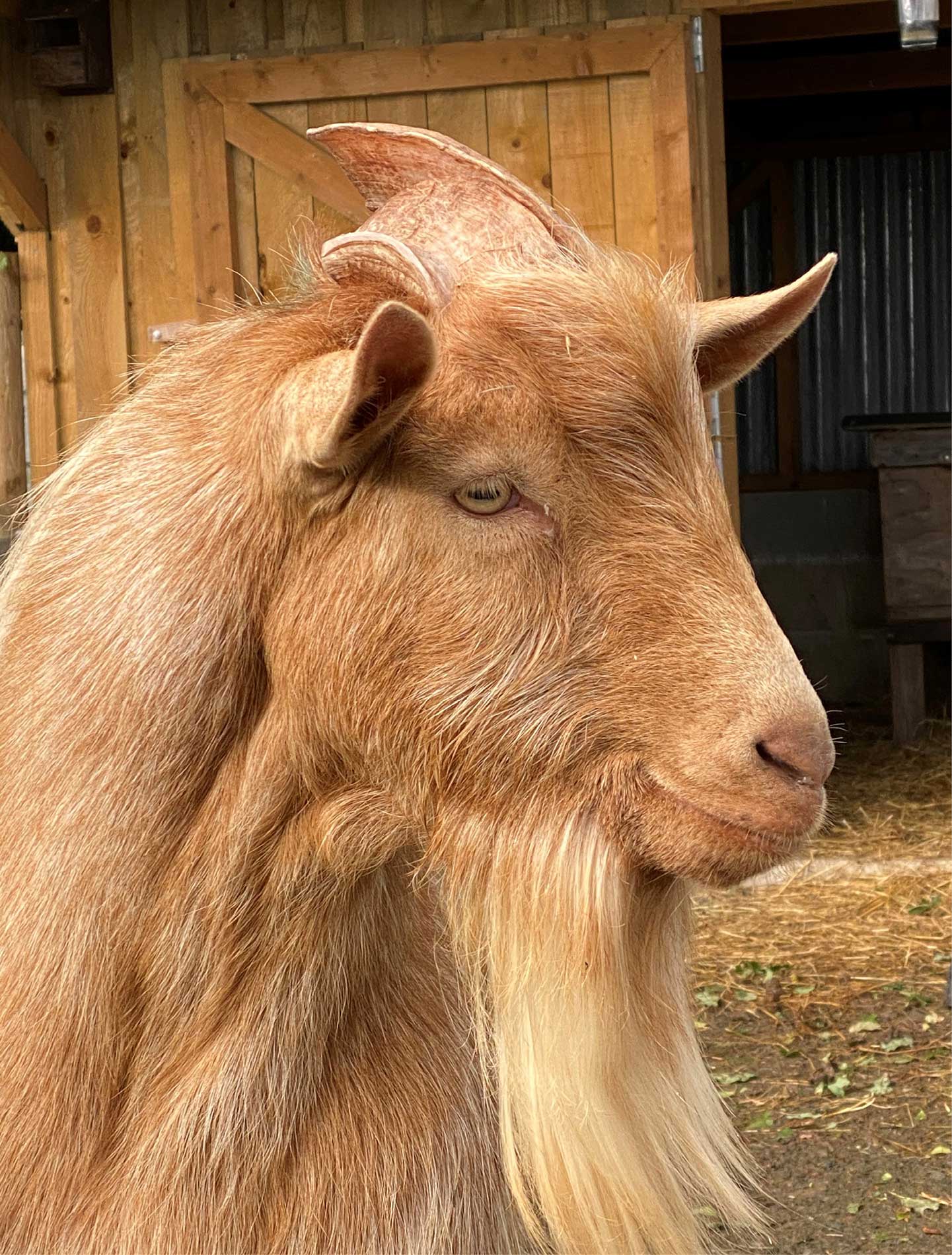
Golden Guernsey buck.
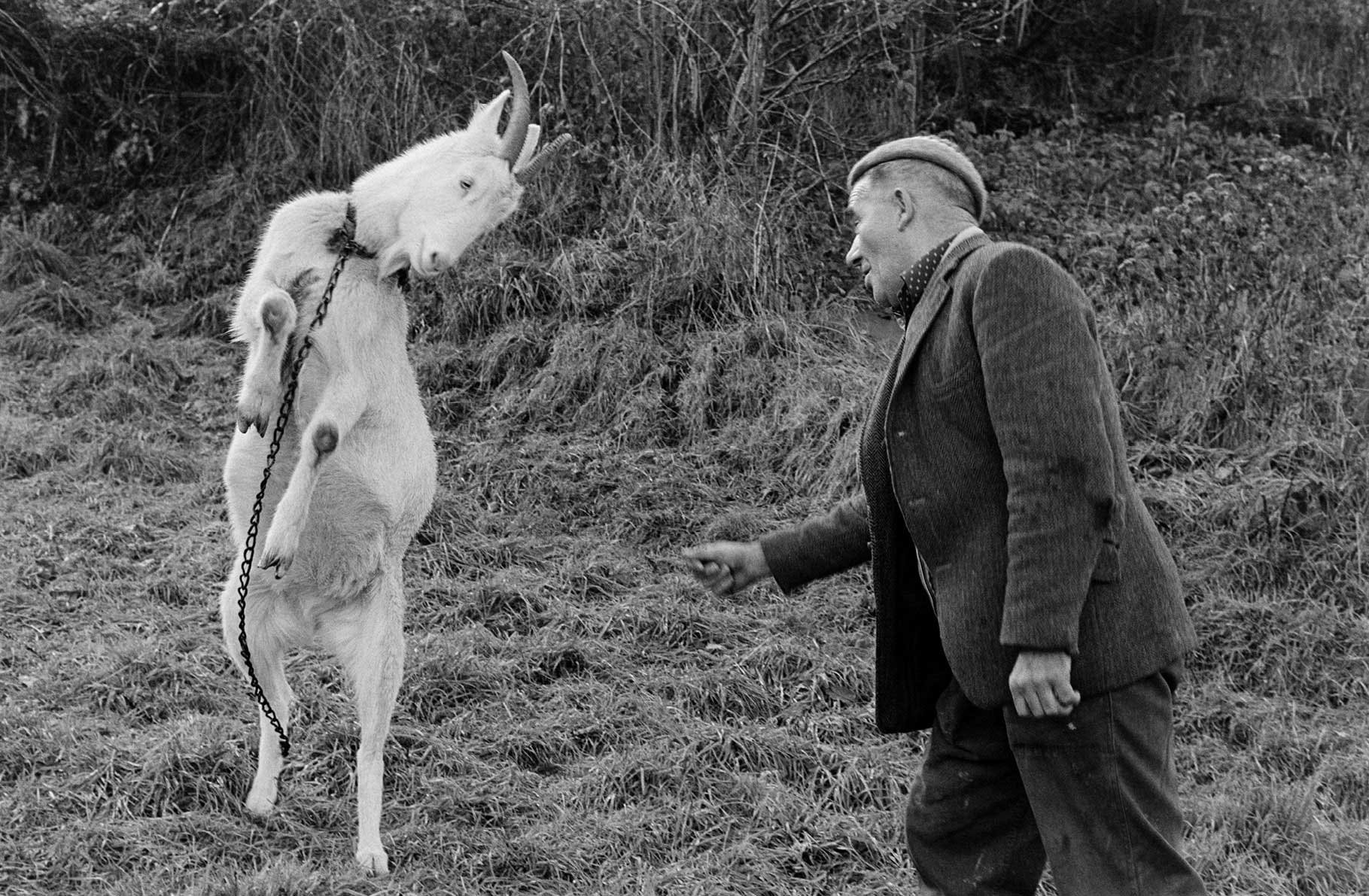
Millhams, Dolton, December 1977. (Documentary photograph by James Ravilious for the Beaford Archive Beaford Arts)
In complete contrast, I found hand-milking a couple of goats wonderfully calming. Sitting with my head tucked against the does flank, eyes closed, day dreaming quietly as I squirted the milk into the pail, was balm in a very busy life. The kitchen had soft goats curds in muslin hanging from hooks, draining into bowls, and tasted delicious spread on oatcakes or homemade bread. This simple making of nutritious food from goats milk has kept people fed for thousands of years, and in times of dizzying modernity continues to provide many with a sense of reassurance (I can make my own food) and calm (and I have to do it in a relaxed manner).
There are an absolutely stonking one billion goats in the world give or take one or two, with more than half of them in Asia (China, India, Pakistan and Bangladesh); not enough for each person in the world, but every group of eight people could have a goat to share.
Goats reflect the earliest of livestock farming and domestication, and the continued existence of wild herds found from England to the Himalayas show in contrast just how adaptable our domestic goats are, thriving on the lives we keepers give them. Its believed that goats were domesticated over 10,500 years ago: they originated from the Bezoar ibex in the Middle East, and spread from there across the globe. Its not surprising that goats were targeted for domestication as providers of milk, meat, skins, fibre, fuel (dried dung), parchment, food and liquid carriers (horns, stomach, bladder and intestines) and musical instruments, and as agile, sure-footed beasts of burden.
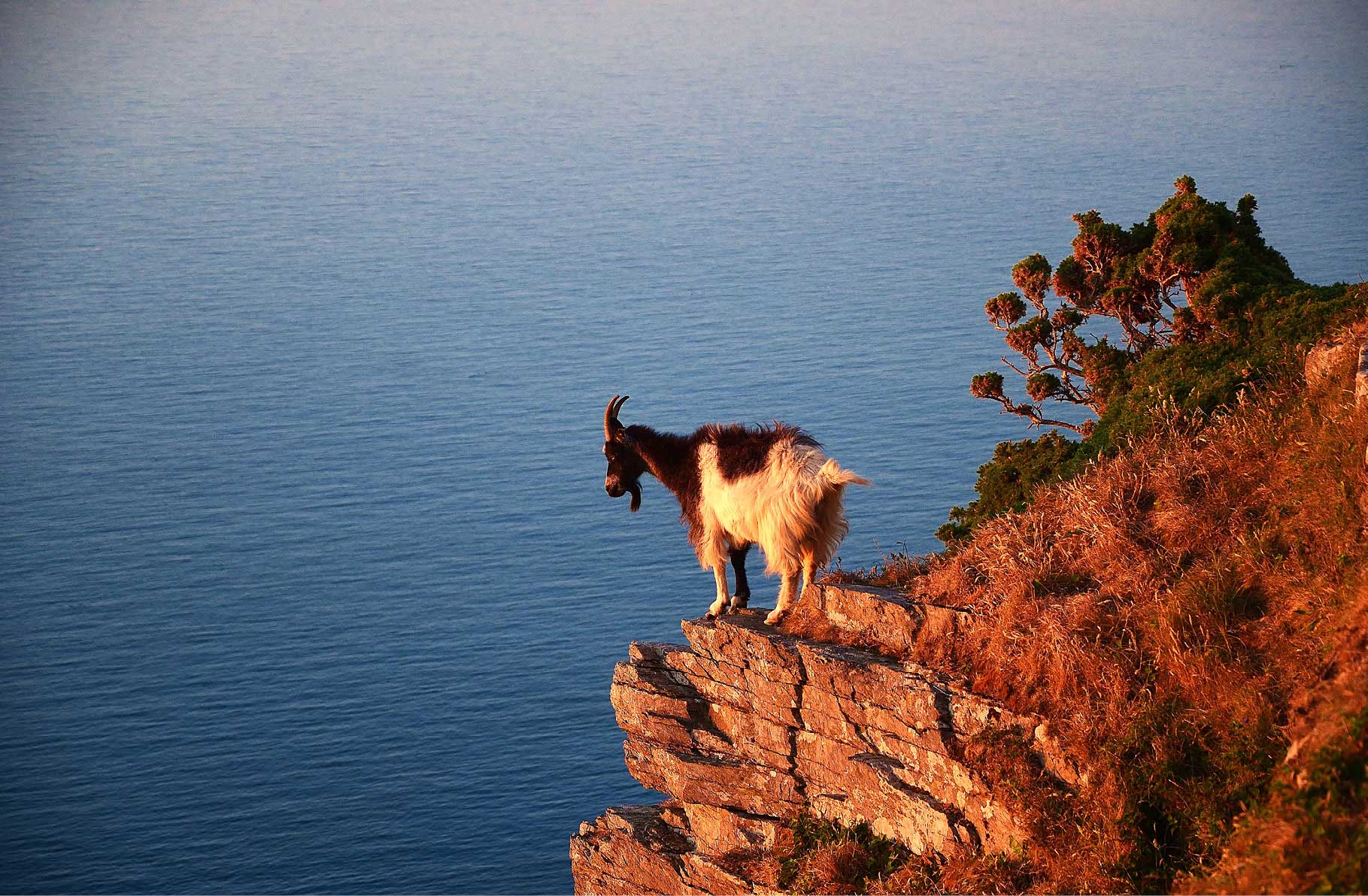
Lynton feral goat on the cliffs.
Goats appear in the Bible, in mythology, astrology, in folk tales and fables, in art (Chagall has them playing violins), and as satanic priapic mischievous creatures, half man, half goat. In modern times we recognize a straggle of nimble, skipping goats with tinkling bells around their necks as a charming troupe in opening film sequences taking us to a pastoral past and a hand-to-mouth, simpler and harsher existence than our own. But goats give comfort too, their presence telling us that hunger, thirst and lack of clothing are not pressing concerns for their keepers.
Goats are full of contradictions. They thrive on harsh, rocky terrain, yet in domesticity are needy in their desire for shelter. They browse with abandon, making the most of wild herbs, plants and trees, but in our care are both picky and wasteful with their food. They relish drinking from a mountain stream, yet turn their noses up at a clump of leaves in the drinking bowl. They are independent explorers into every possible mischief, but love routine. They are free spirits, yet will follow their owner like a pet dog. They are anything but boring, and will constantly keep you on your toes.
Take a deep breath as you take on board the crucial information about the legal stuff and potential ailments, as both can tax the brain, and consider them pragmatically as part of your goat-keeping life, which will have many joys. This book is a beginners guide to keeping goats, full of information that will enable you to put in place what is required for having happy, healthy, productive goats. Its not possible to guarantee anyone a problem-free goat experience, but with guidance, plus your own watchfulness and intelligent observation, you will build the knowledge for successful and enjoyable goat-keeping.
CHAPTER 2
WHY KEEP GOATS?
Its a tricky thing, determining whether livestock is something you want in your life, and if so, which species will best suit. There comes a point when all the reading, the watching of videos and television programmes, and visiting agricultural shows turns into a decision that goats are (or are not) for you, and that its time to do something about it. Keeping animals is not something to enter into lightly, as goats will have a significant impact on your life and how you spend your time.
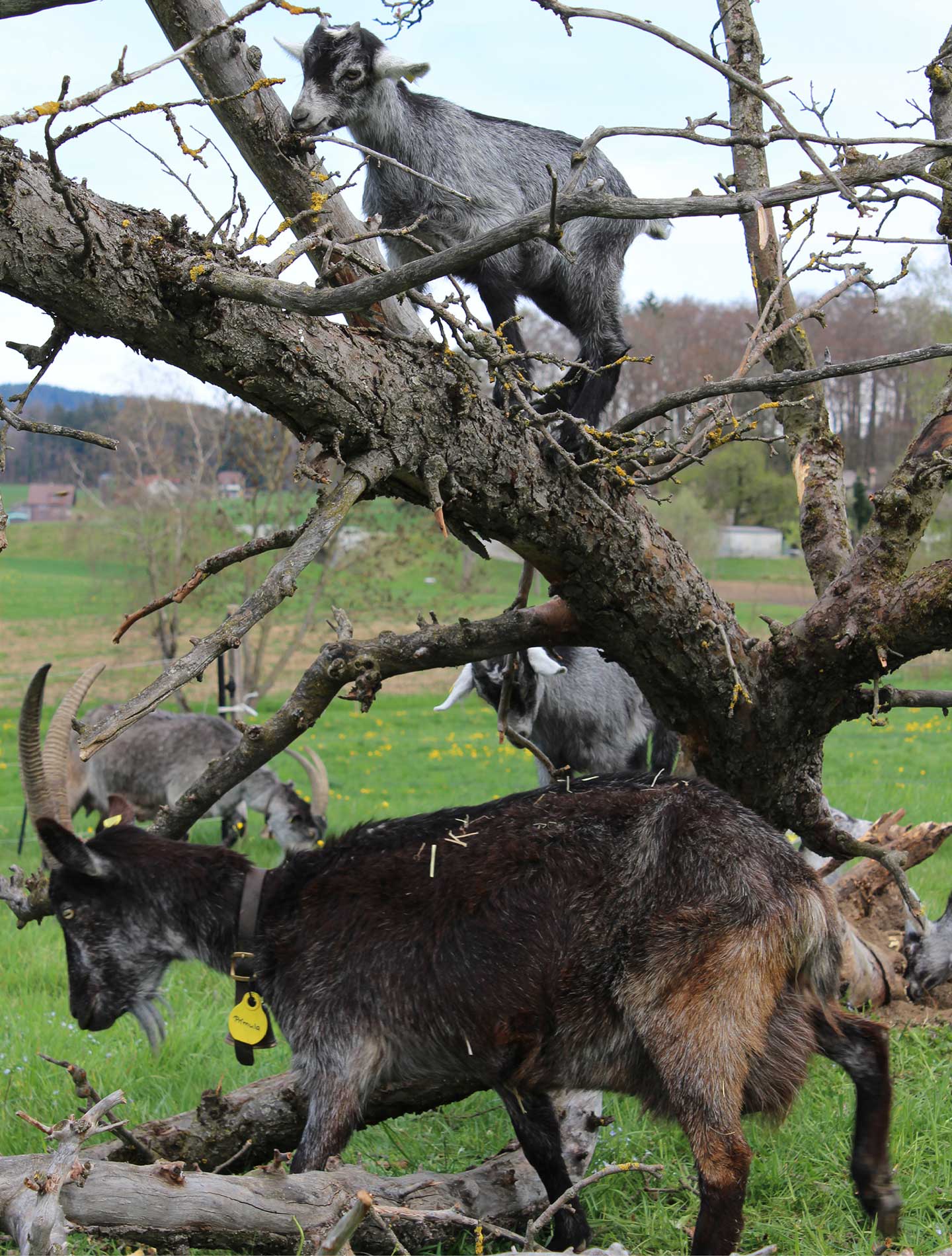
Capra Grigia goats.
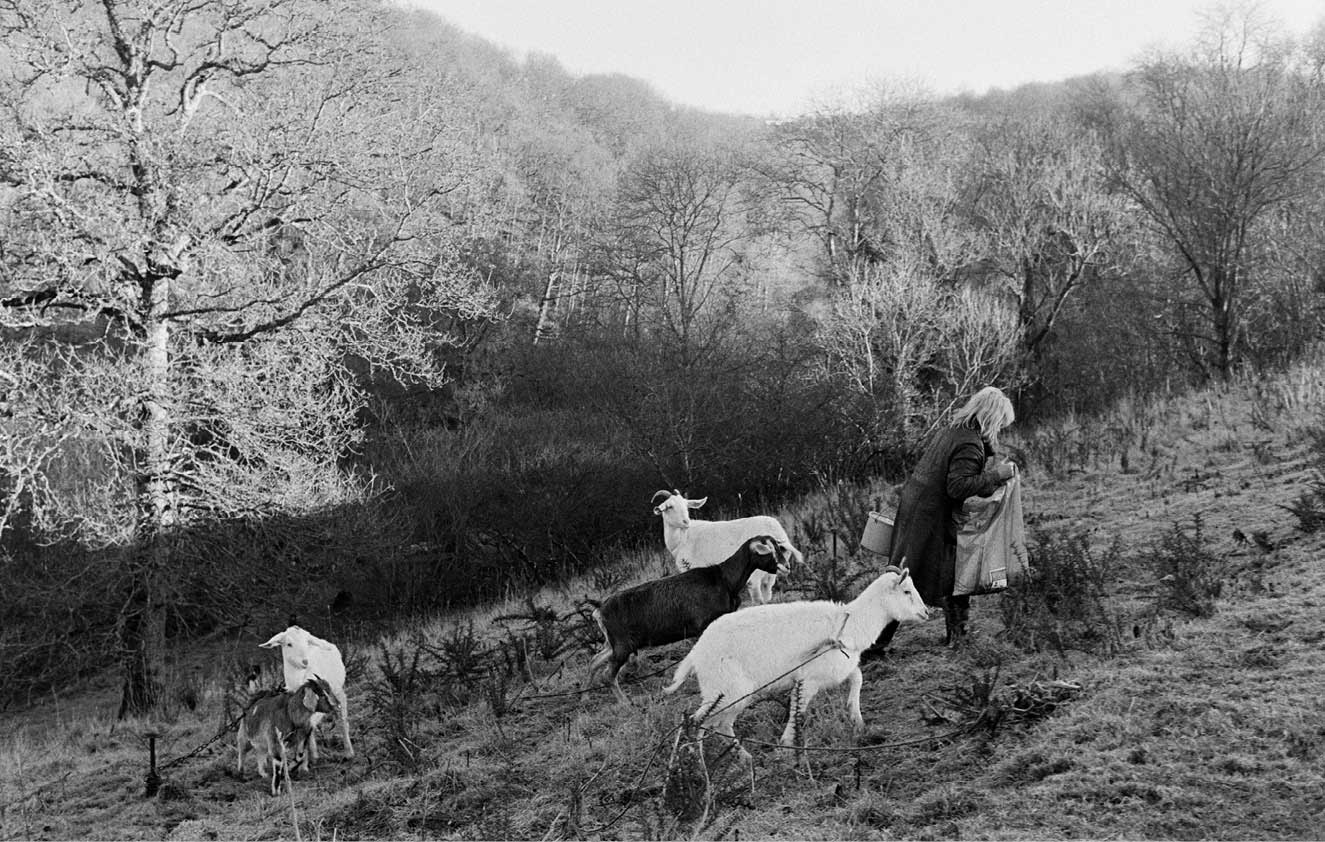
Millhams, Dolton, December 1981. (Documentary photograph by James Ravilious for the Beaford Archive Beaford Arts)
Its worth expending some effort asking yourself why you want to keep goats. If you are after healthy, low-cholesterol meat with zero food miles and absolute provenance, goat meat is a fantastic option. If the idea of making goat-milk ice cream, clotted cream, butter and cheeses appeals, youre on to a winner. If you love spending your time out of doors and have no worries about dealing with muck, urine-soaked straw, birth fluids, mud, farmyard smells both rich and fairly ghastly, then goats wont faze you.



